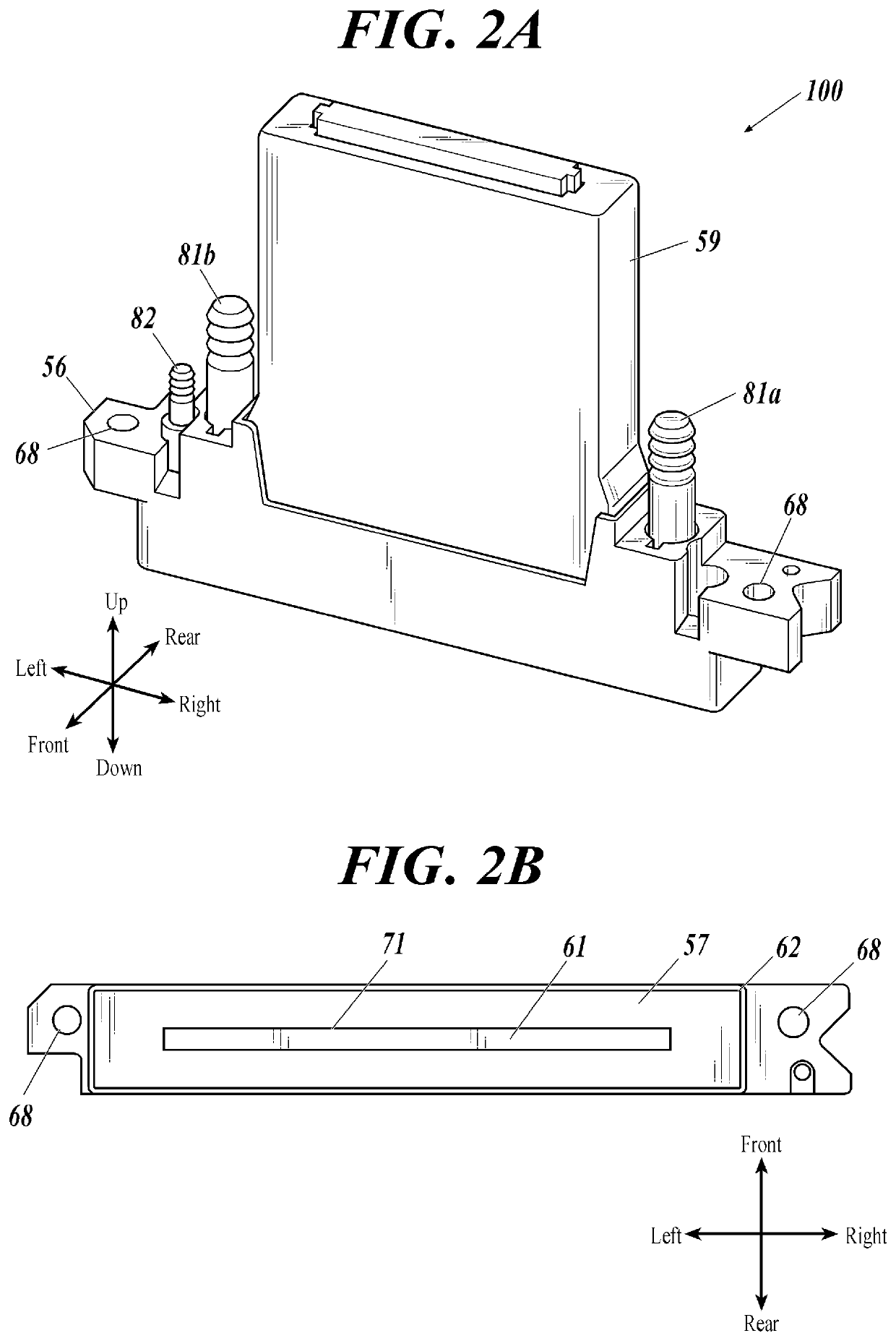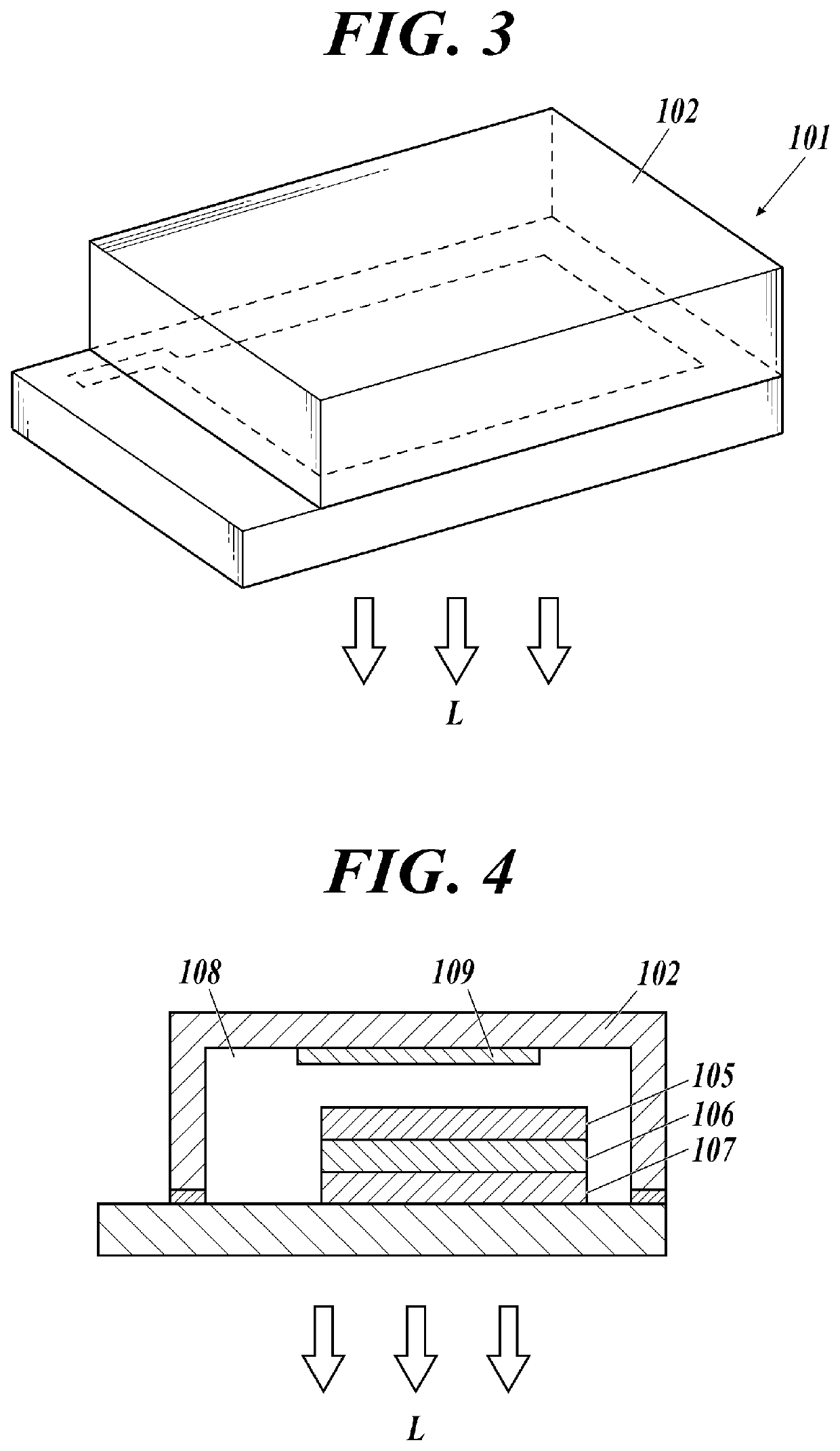Benzonitrile derivative and manufacturing method therefor, ink composition, organic electroluminescent element material, light-emitting material, charge transport material, light-emitting thin film, and organic electroluminescent element
a technology of benzonitrile and derivatives, applied in the field of benzonitrile derivatives, can solve the problems of thermal decomposability and electrochemical alteration, and reducing the luminous efficiency so as to improve the luminous efficiency and the lifetime of the light-emitting element, and suppress the physical property variation of the charge transfer/light-emitting thin film.
- Summary
- Abstract
- Description
- Claims
- Application Information
AI Technical Summary
Benefits of technology
Problems solved by technology
Method used
Image
Examples
example 1
[0254]
[0255]It was synthesized according to the following scheme.
[0256]Carboline (10.9 g, 64.6 mol) was dissolved in NMP (N-methyl-2-pyrrolidone) (42 ml), and NaH (2.80 g, 70.0 mol) was added, then the mixture was stirred for 30 minutes. Then, 2,3,4,5,6-pentafluorobenzonitrile (1.32 g, 10.8 mol) was added to the solution, and the mixture was heated and stirred at 120° C. for 5 hours. Water was added to the reaction solution, and the precipitate was collected by filtration. This was recrystallized to obtain 9.20 g of the target exemplary compound (D-1).
[0257]
[0258]It was synthesized according to the following scheme.
[0259]Carboline (6.54 g, 38.68 mol) was dissolved in THF (tetrahydrofuran) (42 ml), and NaH (1.68 g, 42.0 mol) was added, then the mixture was stirred for 30 minutes. Then, 2,3,4,5,6-pentafluorobenzonitrile (1.32 g, 10.8 mol) was added to the solution, and the mixture was stirred with heating under reflux for 5 hours. Water was added to the reaction solution, and the prec...
example 2
[0265]
[0266]An anode was prepared by making patterning to a glass substrate of 100 mm×100 mm×1.1 mm (NA45, produced by AvanStrate Inc.) on which ITO (indium tin oxide) was formed with a thickness of 100 nm. Thereafter, the above transparent support substrate provided with the ITO transparent electrode was subjected to ultrasonic washing with isopropyl alcohol, followed by drying with desiccated nitrogen gas, and it was subjected to UV ozone washing for 5 minutes. On the transparent support substrate thus prepared was applied a 70% solution of poly (3,4-ethylenedioxythiphene)-polystyrene sulfonate (PEDOT / PSS, Baytron P AI4083, made by Bayer AG.) diluted with water by using a spin coating method at 3000 rpm for 30 seconds to form a film, and then it was dried at 200° C. for one hour. Thus, a hole injection layer having a thickness of 20 nm was prepared. Then, a thin film was formed by a spin coating method under the conditions of 2000 rpm and 30 seconds using a solution of polyvinylca...
example 3
[0276]
[0277]An anode was prepared by making patterning to a glass substrate of 100 mm×100 mm×1.1 mm (NA45, produced by AvanStrate Inc.) on which ITO (indium tin oxide) was formed with a thickness of 100 nm. Thereafter, the above transparent support substrate provided with the ITO transparent electrode was subjected to ultrasonic washing with isopropyl alcohol, followed by drying with desiccated nitrogen gas, and it was subjected to UV ozone washing for 5 minutes. On the transparent support substrate thus prepared was applied a 70% solution of poly (3,4-ethylenedioxythiphene)-polystyrene sulfonate (PEDOT / PSS, Baytron P AI4083, made by Bayer AG.) diluted with water by using a spin coating method at 3000 rpm for 30 seconds to form a film, and then it was dried at 200° C. for one hour. Thus, a hole injection layer having a thickness of 20 nm was prepared. Then, a thin film was formed by a spin coating method under the conditions of 2000 rpm for 30 seconds using a solution of polyvinylca...
PUM
| Property | Measurement | Unit |
|---|---|---|
| energy difference | aaaaa | aaaaa |
| energy | aaaaa | aaaaa |
| temperature | aaaaa | aaaaa |
Abstract
Description
Claims
Application Information
 Login to View More
Login to View More - R&D
- Intellectual Property
- Life Sciences
- Materials
- Tech Scout
- Unparalleled Data Quality
- Higher Quality Content
- 60% Fewer Hallucinations
Browse by: Latest US Patents, China's latest patents, Technical Efficacy Thesaurus, Application Domain, Technology Topic, Popular Technical Reports.
© 2025 PatSnap. All rights reserved.Legal|Privacy policy|Modern Slavery Act Transparency Statement|Sitemap|About US| Contact US: help@patsnap.com



